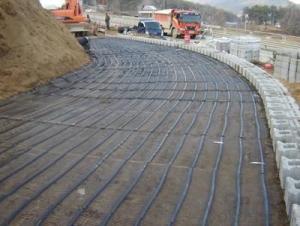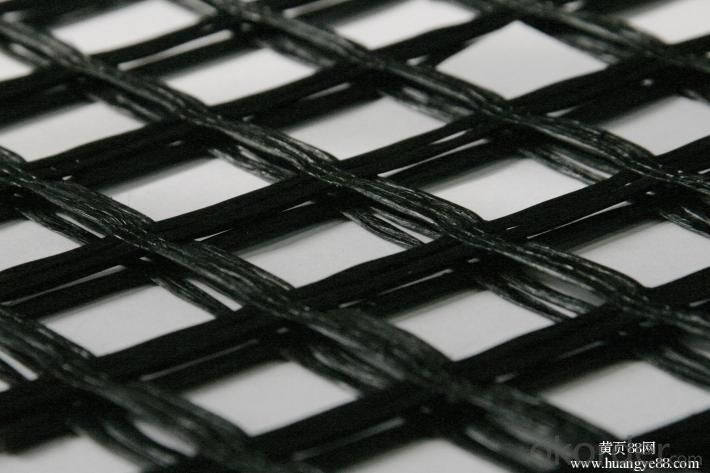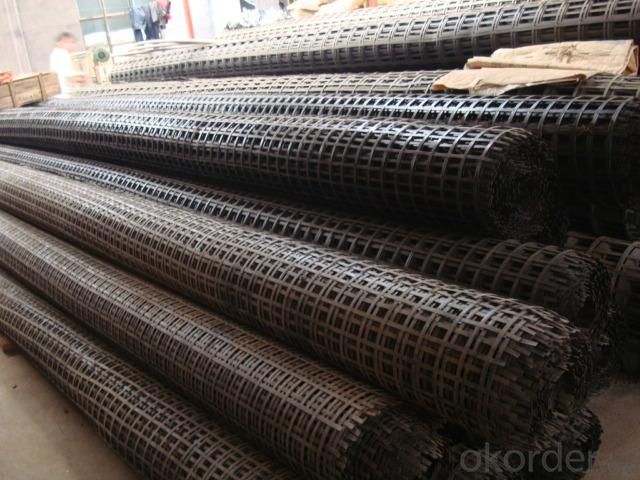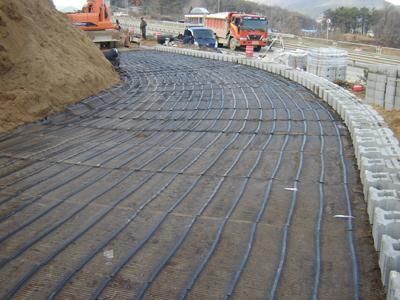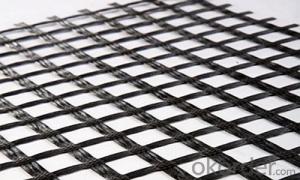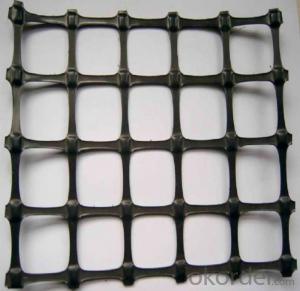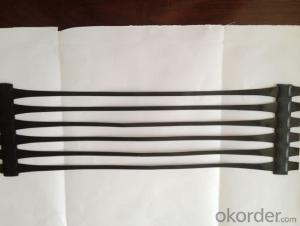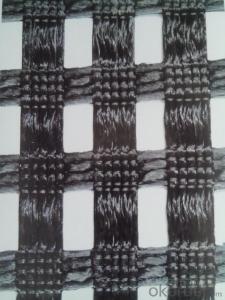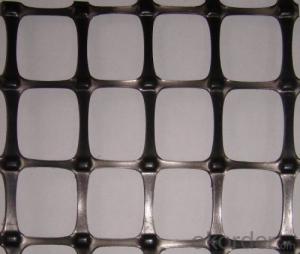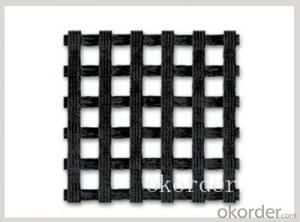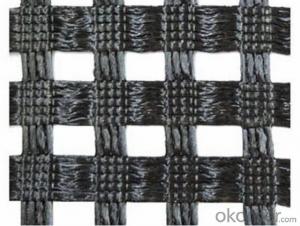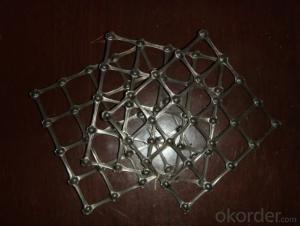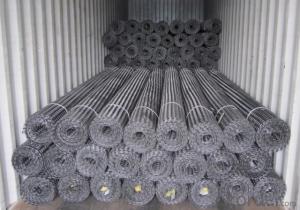Vegetated Biaxial Geogrid for Road Construction Material
- Loading Port:
- Shanghai
- Payment Terms:
- TT OR LC
- Min Order Qty:
- 85800 m²
- Supply Capability:
- 1000000 m²/month
OKorder Service Pledge
OKorder Financial Service
You Might Also Like
The Description of Biaxial Geogrid
Biaxial Geogrid is a kind of new favorable earthwork base material to strengthen the road surface and roadbed. This product is made by weaving and covering fiberglass filament. It is featured by high vertical and horizontal tensile strength, low unit extension, high flexibility, and favorable high and low temperature resistance. The products after surface covering own the favorable property of alkali resistance and aging resistance.
The details of Biaxial Geogrid
| Type: | Geogrid | Material: | Biaxial Geogrid | Place of Origin: | China (Mainland) |
| Certificates: | CE,ISO | Color : | White & Black | Width : | 1m--6m |
| Length | 50-200m | Mesh Size: | 10-40mm | Tensile Strength | 30KN-300KN |
| Area Weight | 130-900g/sm | Package | PP bags or PE film | Approximate mesh size | 12.7*12.7 25*25 40*40 |
Packaging & Delivery
| Packaging Details | PP bags or PE film. Or Packed as customers' requests; |
| Delivery Detail | 10-20days after see the payment. |


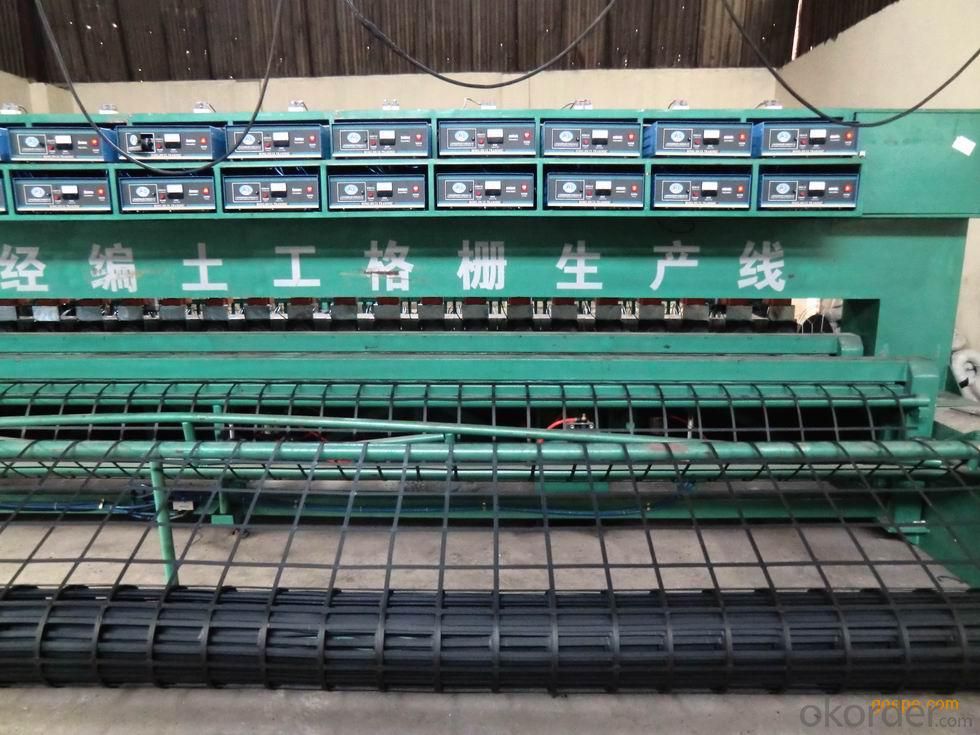
Remarks: we are very large fortune 500 enterprise with more than 20branches in worldwide, and have almost ten years export experience in geosynthetic field. We have kunlun bank account and have many Iran geosynthetics customers.So if any question or support, please just feel free to contact me at any time.
- Q: Can geogrids be used in temporary construction access roads for wetlands?
- Yes, geogrids can be used in temporary construction access roads for wetlands. Geogrids are commonly used in construction projects to provide stabilization and reinforcement to the ground. In the case of wetlands, where the soil is often soft and unstable, geogrids can help distribute the load of construction vehicles, prevent soil erosion, and minimize the impact on the sensitive ecosystem. However, it is important to consider the specific conditions and requirements of the wetland area before implementing geogrids.
- Q: Can geogrids be used in stabilization of mine tailings ponds?
- Yes, geogrids can be used in the stabilization of mine tailings ponds. Geogrids are often employed to reinforce and stabilize soil, preventing erosion and promoting the overall stability of the area. In the case of mine tailings ponds, geogrids can be used to enhance the integrity of the pond's walls and base, ensuring that the containment structure remains secure and prevents any leakage or environmental hazards associated with mine tailings.
- Q: How do geogrids enhance the performance of geocells?
- Geogrids enhance the performance of geocells by providing additional stability and reinforcement. They are placed within the geocell structure to increase load-bearing capacity, prevent lateral spreading, and improve overall structural integrity. This combination of geogrids and geocells creates a stronger and more durable foundation for various applications such as soil stabilization, erosion control, and slope protection.
- Q: How does the steel plastic geogrid stretch? Where do you have a special fixture to sell? What is the best thing to use?
- Steel plastic geogrid price steel plastic geogrid specification steel plastic geogrid roleWhich is the professional manufacturer of steel plastic geogrid?Poi634 | browse 331Posted on 2017-02-21 12:33 best answerPlastic geogrid with high strength steel wire (or other fiber), through special processing, and polyethylene (PE) or polypropylene (PP), and adding other additives by extrusion become composite high strength tensile band, and surface roughness is embossed, high strength reinforced geotextile. The single belt is formed by the longitudinal and horizontal spacing or the clamping arrangement, and the welding joint is formed by adopting the welding technology of special strengthening bonding to weld the joint
- Q: How do geogrids enhance the performance of geotextile tubes?
- Geogrids enhance the performance of geotextile tubes by providing additional strength and stability. They act as a reinforcement layer within the tube, preventing deformation and maintaining the desired shape. Geogrids also help distribute the load evenly, increasing the overall stability and durability of the geotextile tube system.
- Q: How do geogrids improve the performance of geotextile-reinforced retaining walls?
- Geogrids improve the performance of geotextile-reinforced retaining walls by providing additional tensile strength and stability. They work by distributing the applied loads more evenly throughout the wall, reducing the risk of wall failure due to excessive stress concentrations. Geogrids also enhance soil reinforcement, preventing soil erosion and maintaining the integrity of the wall structure over time.
- Q: Can geogrids be used in erosion control on riverbanks?
- Yes, geogrids can be used in erosion control on riverbanks. Geogrids are commonly used in such applications to stabilize the soil and prevent erosion by reinforcing the bank's structure and retaining the soil in place.
- Q: Can geogrids be used in seismic zones?
- Yes, geogrids can be used in seismic zones. Geogrids are commonly used in geotechnical engineering to reinforce soils and provide stability to structures. They can also help mitigate the effects of earthquakes by distributing the seismic forces and reducing soil liquefaction. However, specific design considerations and geogrid properties should be taken into account to ensure their effectiveness in seismic zones.
- Q: Are geogrids effective in preventing soil erosion around pipelines?
- Yes, geogrids are effective in preventing soil erosion around pipelines. Geogrids are engineered materials that provide reinforcement and stabilization to the surrounding soil. They create a barrier that helps prevent soil movement and erosion caused by water flow or other environmental factors. Geogrids also distribute the weight and stress of the pipeline more evenly, reducing the chance of soil settlement and potential damage. Overall, geogrids play a crucial role in protecting pipelines from soil erosion and ensuring their long-term stability.
- Q: Can geogrids be used in temporary construction haul roads for mining applications?
- Yes, geogrids can be used in temporary construction haul roads for mining applications. Geogrids are a type of geosynthetic material that can provide stabilization and reinforcement to the road base, increasing its load-bearing capacity and reducing the risk of erosion and rutting. They are commonly used in mining applications to improve the performance and longevity of haul roads, even in temporary construction scenarios.
Send your message to us
Vegetated Biaxial Geogrid for Road Construction Material
- Loading Port:
- Shanghai
- Payment Terms:
- TT OR LC
- Min Order Qty:
- 85800 m²
- Supply Capability:
- 1000000 m²/month
OKorder Service Pledge
OKorder Financial Service
Similar products
Hot products
Hot Searches
Related keywords




